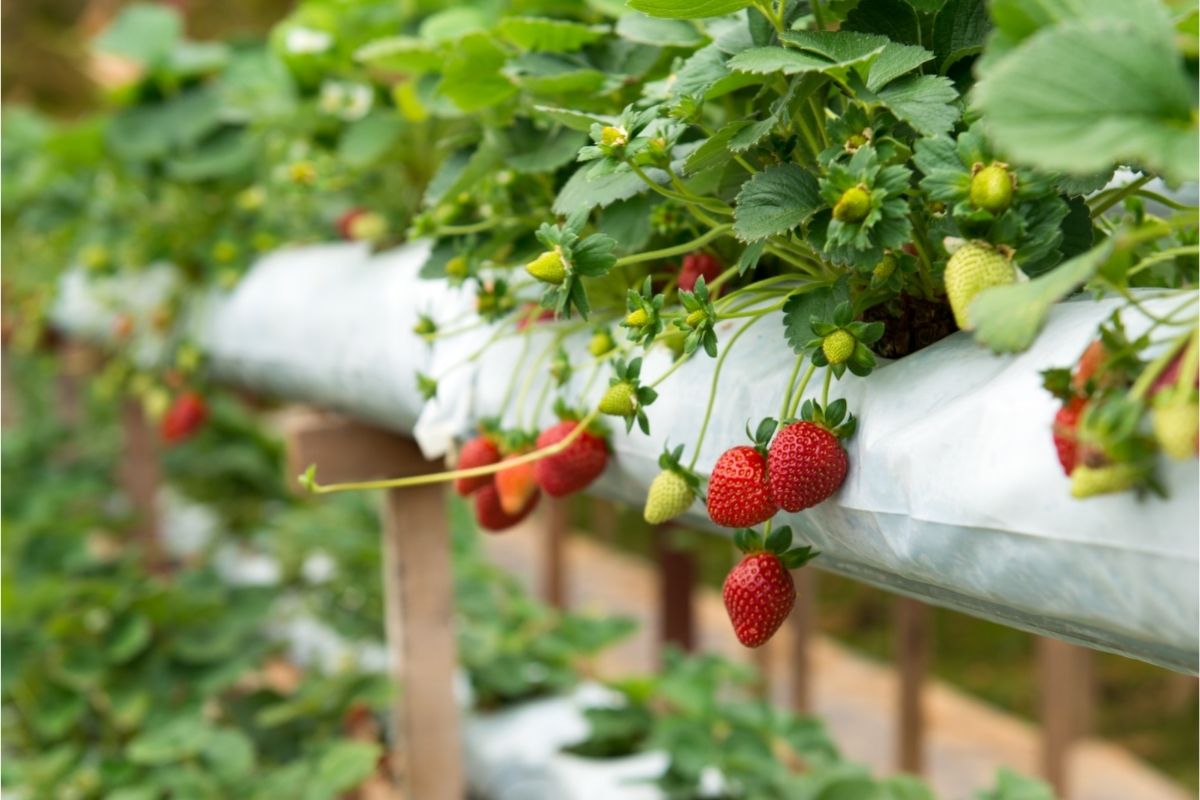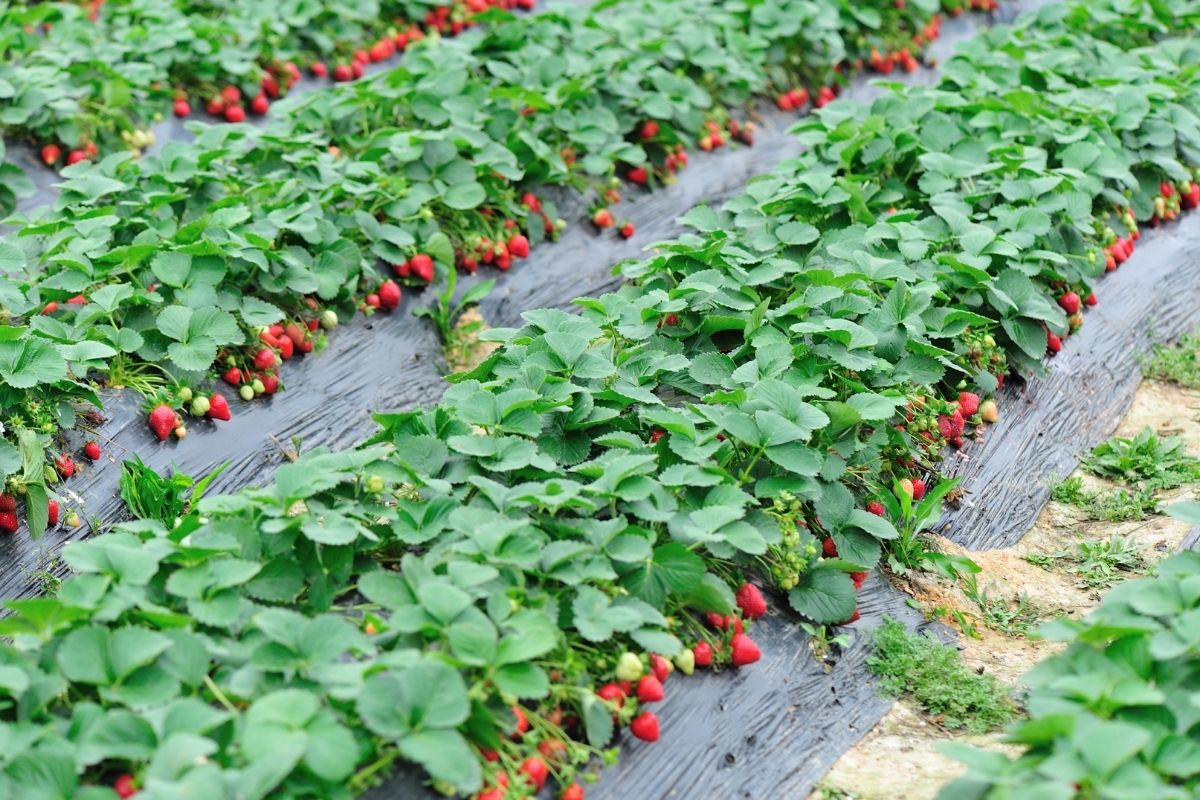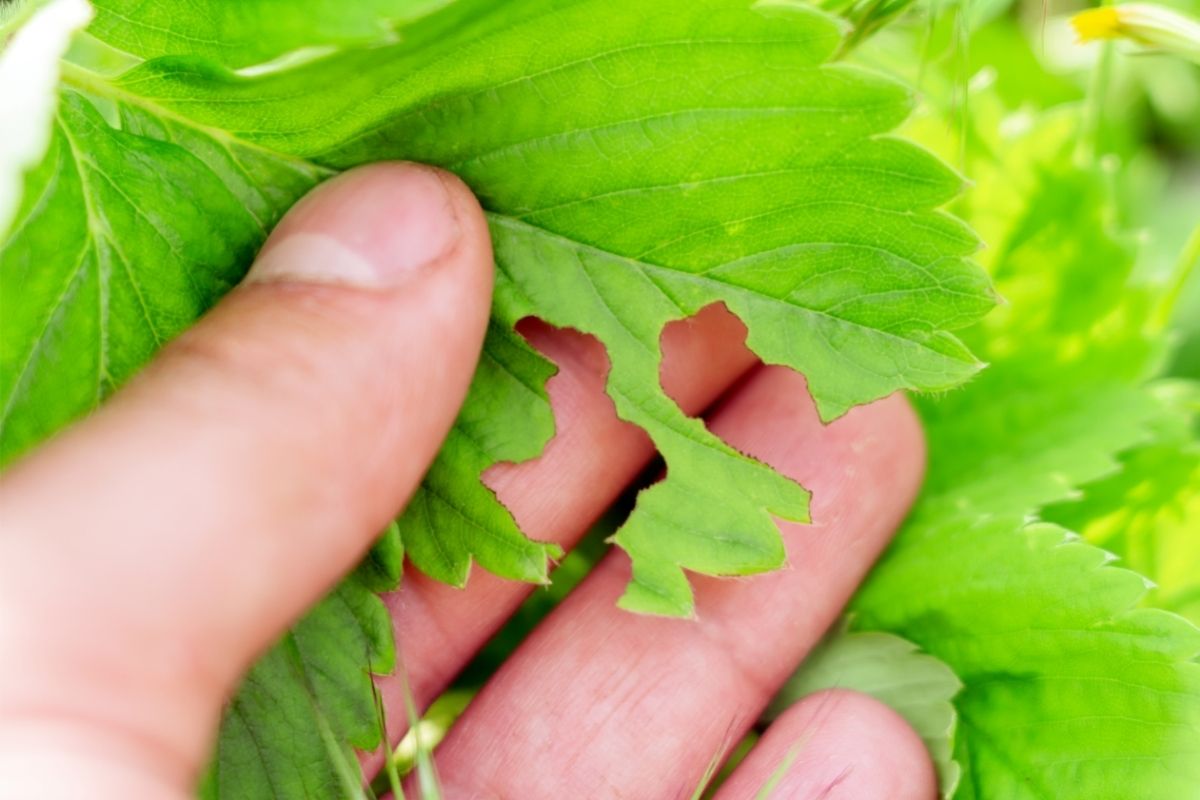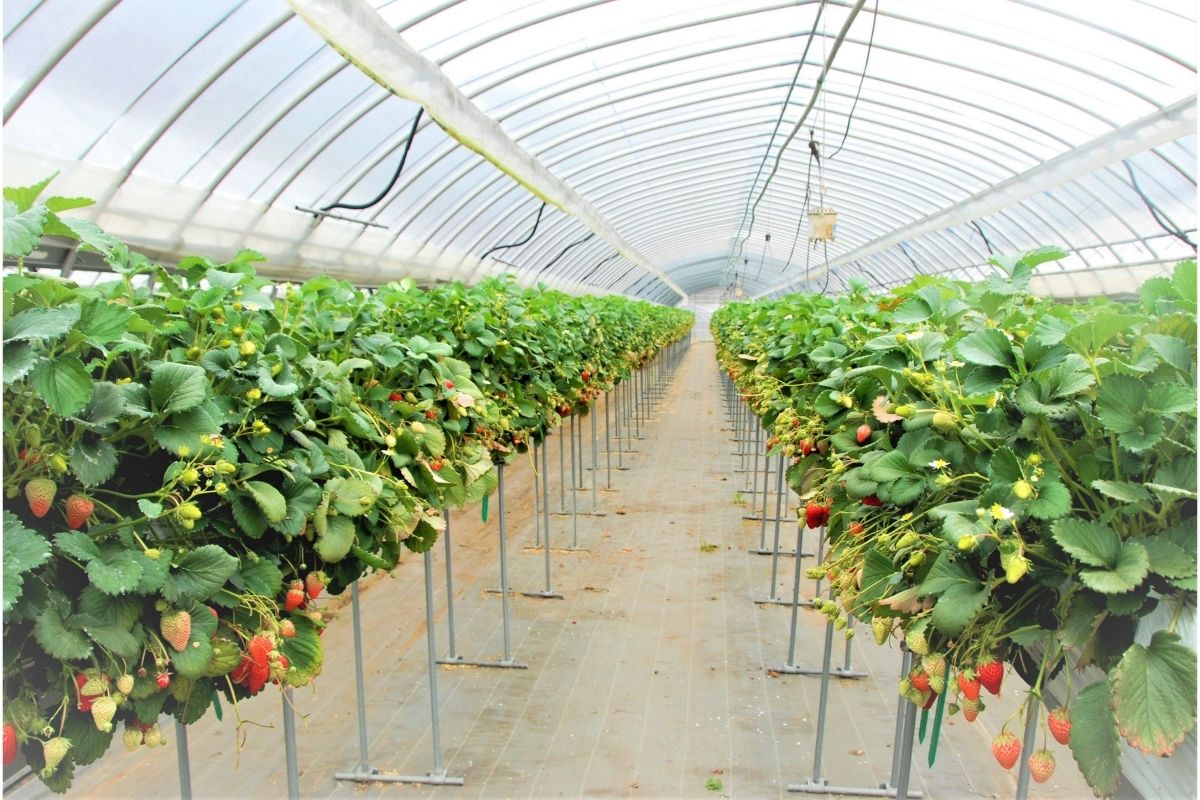Strawberries are a popular choice of fruit to grow because they are delicious, affordable, can be added to a lot of baking and cooking recipes, and are one of the easier types of fruit to grow. Know more about the timeline of growing strawberries in this article.
We will talk about the different types of strawberries and how they differ from one another, how to grow them, and how long it takes for them to grow.
Keep reading to find out how to have buckets of juicy fruit right at your fingertips.

Types Of Strawberries
Most people think that there is only one kind of strawberry, but there are actually more and more variations being bred all the time.
However, there are three main types of strawberries that have their own strengths and weaknesses.
It’s good to know about these different varieties so that you can figure out what variation would work best in your environment as some are hardier than others.
The most common type of strawberry is the June-bearing strawberry which is likely due to the fact that they grow the largest.
They produce their fruit around mid-June to early July and do not take that long to grow compared to other variations.
Ever-bearing is another type of strawberry that produces two harvests a year, one in Spring and another in late summer.
People like to grow ever-bearing strawberries because they cope well in areas with limited space.
Finally, there are day-neutral strawberries that produce strawberries that are smaller than both the June-bearing and the ever-bearing variations.
However, in the first year of being planted, they produce a lot of strawberries which the June-bearing type cannot do.
Related: What Is Eating My Strawberries? The Culprits & How To Control Them!
How To Grow Strawberries

Before you start planting strawberries, you will have to take note of your location because strawberries need at least six hours of direct sunlight a day but 10 or more hours is even better.
Strawberries can be planted considerably closer together in containers, but they will need to be divided and replanted after one season to stay healthy.
Make sure the container has drainage holes in the bottom and use all-purpose potting soil.
If you are planting bare-root strawberries, you will need to soak the roots in water for about an hour so that they become rehydrated.
Then, cut any roots that are too long or straggly and dig a hole of appropriate size. Place the plant into the hole with the crown held in one hand and with the other, fill the hole in with soil and pat it so that it is firmly in place.
After that, water the plants thoroughly, and they should begin to settle in and take root.
You will also need to test your soil beforehand as well to find out if it has enough nutrients.
Even if your soil has a good amount of nutrients, it is still advised to add some compost that has been well-rotted into the soil before you plant the strawberries.
As well as adding nutrients to the soil, adding compost also increases microbial activity and improves drainage.
When you are looking for strawberry plants at garden centers, pick the ones that don’t have any dead leaves or discoloring as this will set you off on the right foot with growing healthy plants.
After buying your strawberry plants, you must keep them cool and moist and plant them as soon as you can.
You should plant the strawberries in an area away from buildings and trees as these will likely cast shade onto the strawberries for long periods of time.
Trees can be especially detrimental because they will also compete for nutrients and water, so the strawberries should be well out of the tree’s root zone which covers the same area as the canopy.
The soil in which you plant your strawberries should also be well-drained and in a place that does not accumulate standing water after heavy rain.
By planting on higher ground, the soil will be well-drained, and the ground won’t be damaged by frost whilst also increasing the circulation of air around the strawberries.
Having good air circulation is very beneficial for strawberries because it can prevent the risk of some diseases.
You can control runners, weeds, and pests by planting the strawberries in rows. The most common way of doing this is by leaving a space between the plants measuring 18 and 24 inches apart.
If you are growing a lot of strawberries, the distance between the rows should be three to four feet apart.
It is important to use this spacing guide because if you are growing June-bearing strawberries, for example, they will fill these gaps with their runners which can overcrowd the plants if there is not enough space for them.
During the first year with the strawberries, you will need to do a lot of weeding, but after the year has passed, they will require a lot less maintenance.
As well as this, you will need to cut off the runners in this first year as well so that the plants can concentrate on producing fruit.
Plants should be watered on a regular basis as they grow, especially during dry seasons. To limit the danger of disease, avoid soaking the leaves when watering.
If you are planting your strawberries in containers, they will need to be watered more regularly because hot weather can dry the soil out quickly.
Another thing to be mindful of when growing strawberries is the risk of frost damage during the start of the season.
To prevent this, keep tabs on the weather forecast and add row covers if the temperature drops below 28 °F, then remove the cover during the day so that the strawberry flowers can be pollinated.
Protecting Strawberries From Pests

Humans are just one of the many fans of strawberries as a lot of animals such as birds, slugs, squirrels. and raccoons love them too which is why you have to take the extra steps to protect what is rightfully yours.
By making the overall area much less welcoming for animals, you will be able to discourage a lot of animals from coming in and eating your strawberries.
If you have food and water resources available, you should remove them which includes bird tables and bird feeders.
Raccoons, along with possums have an interest in strawberries and also love to dive into garbage bins which means that by moving the bins much further away, they will be far less likely to come across the strawberries.
Even compost can attract a lot of animals, so you should either move the compost or plant the strawberries far away from it.
To protect your strawberries against birds, you will need to cover them with a net that is fine enough to keep birds out but not too fine so that pollinating insects cannot.
For slugs, you can create traps just by using a plastic container and putting some beer in it. Place this trap away from the strawberries, and they will be attracted to the trap more than the strawberries.
To prevent larger animals such as deer from getting to your strawberries, you will most likely be best off with putting up a high-quality fence that reaches about eight feet in height.
Related: Juicy Secrets: A Guide To Growing Strawberries In Pots
How Long Does It Take For Strawberries To Grow?

There are four recognizable phases that the strawberry plant goes through as it grows. The first phase of growth starts in the spring and is when the strawberry will begin to produce flowers and leaves so that it can soak up as much of the sun as possible.
Once the plant has used as much sunlight as it needs, you will start to see little white flowers which is a sign that the second stage is starting.
During this second phase, the little flowers will begin to be pollinated by insects which allows them to blossom into strawberries.
At this stage, the strawberries will be very small and green as they are still early on in their development.
The final stage of this process is when the strawberries grow at a faster speed and will look bigger and much redder, this is the exciting part is you can begin to pick them.
If the strawberries that you planted are bare-root, they will usually take around three months to produce fruit.
If you planted the strawberries from seeds, they will bear fruit in the second summer as it will take the whole first year to establish and fully grow.
The average strawberry plant has a lifespan of six years with the first two years of its production being the most successful ones.
They are perennial which means that they will come back every year, but you can take runners from the established strawberry plants to make new plants from, this allows you to have a fresh batch at all times.
Summary
Strawberries are a lot of people’s favorite fruits, so it is good to know that they only take three months from being planted as bare-roots to produce strawberries and if you choose to grow it from seeds, it will take over a year as it needs time to fully grow.
Strawberries are easy to grow but the biggest challenge that you may face is keeping pests away from them because they are so juicy and delicious.
However, once you take the extra precautions, you will be left with an abundance of strawberry plants that will continue to produce fruit for six years.
Editor’s Recommendations
How To Get Rid Of Millipedes In Home And House Plants For Good!
How To Get Rid Of Springtails In The Soil Naturally? A Comprehensive Guide
How To Get Rid Of Root Mealybugs For Good? A Comprehensive Guide







